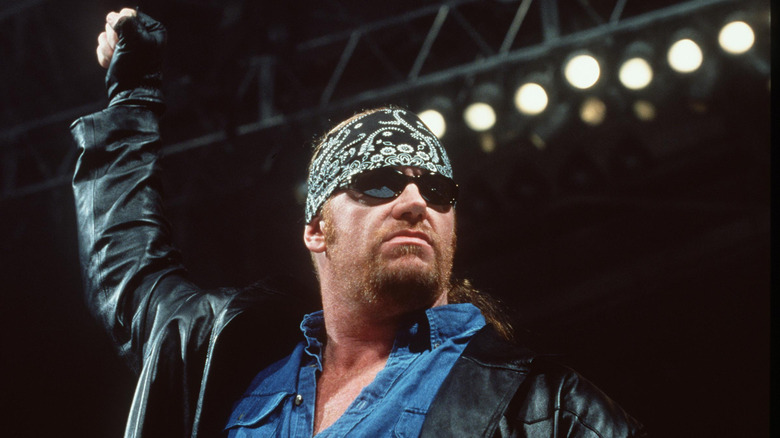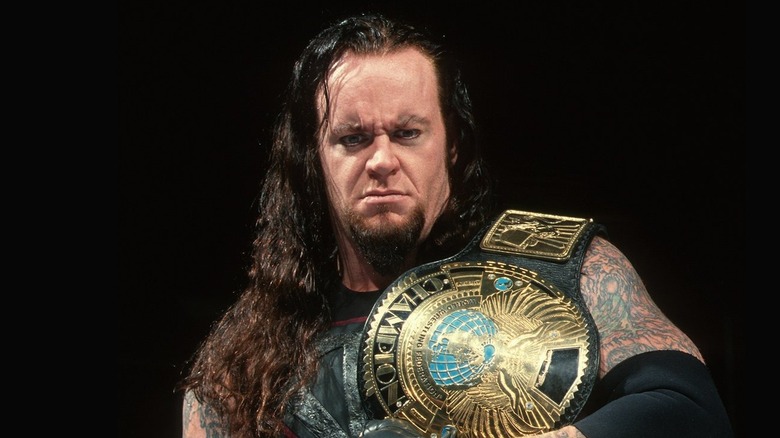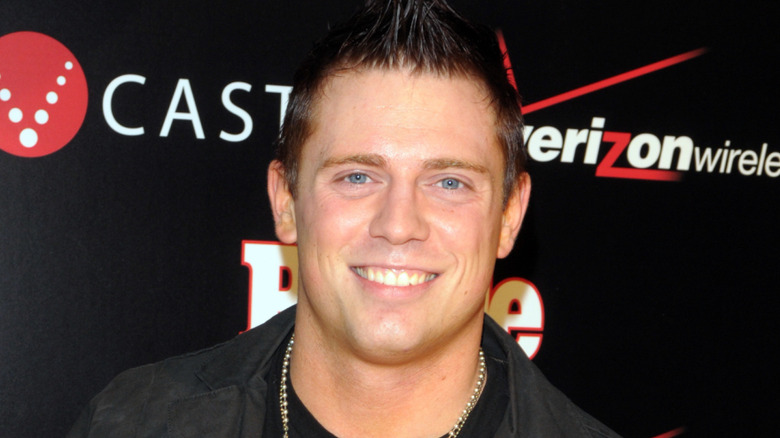What Exactly Was WWE's Wrestler's Court?
The professional wrestling industry is one unlike any other, even by entertainment standards. While the atmosphere seems to have calmed down in recent years, many of the "carny" aspects of the business stayed around long after its events moved from circus tents into stadiums and arenas. However, one of wrestling's strangest traditions didn't actually originate until much later, when performer Dutch Mantel claims he became inspired by court shows he saw on TV and created the concept of wrestler's court.
Wrestler's court was an unofficial way for performers to handle issues amongst one another backstage without involving management or any outside authority. In order for the practice to function as intended, there had to be a tenured locker room veteran present. This individual would act as the judge and would be informed when any issue had arisen between two wrestlers backstage.
The judge would convene a group backstage, including the involved parties, other wrestlers to act as the defense and prosecution, and whoever wanted to watch the show unfold. From there, the judge would hear both sides out and make a ruling of some kind. Depending on the situation, it could result in a punishment for the offending party or the judge might've called for everyone to simply move on.
The Undertaker & Wrestler's Court
It's fair to say that many of the most popular stories surrounding wrestler's court involve Mark "The Undertaker" Calaway. The Undertaker was the one who first brought the tradition over to WWE after learning it from Mantel during his time working in Memphis, Tennessee, and Calaway was most often the judge for the proceedings.
That meant it was up to Calaway to decide if someone was right or wrong, and what their punishment might be. Speaking about wrestler's court in 2020, the Undertaker admitted that the situation could potentially be embarrassing for those on the receiving end, but he tried to ensure that he'd hand out some advice along the way to hopefully prevent anyone from being called back.
According to Mantel, wrestler's court became a much bigger deal in WWE than it was elsewhere, and the performers began holding regular meetings backstage in a packed room. When The Undertaker wasn't around to act as judge, John "Bradshaw" Layfield would most often fill the role, with others like Yokozuna and Ron Simmons reportedly stepping in at times. The practice stayed fairly common from the mid-1990s until around the time the Undertaker and JBL left their full-time roles with the company in the early 2010s.
The Dark Side Of Wrestler's Court
The court itself was meant as a way to entertain the wrestlers, but there were times when it's clear that the institution crossed a line into bullying, especially when non-wrestlers were involved. Writer Brian Gewirtz and announcer Howard Finkel were taken to wrestler's court at different points, and according to those in attendance, both men were pushed to extremes that left them visibly shaken.
Another notorious wrestler's court story involves The Miz, who was a reality TV contestant before joining WWE. Early in his career, The Miz is said to have made the mistake of getting crumbs of food on Chris Benoit's bag. As a result, The Miz was forced to change outside of the locker room following a session of wrestler's court.
The practice no longer seems to be in use, and that type of informal punishment structure is becoming increasingly rare in modern society. WWE star CM Punk is one person that's been outspoken about his distaste for the tradition. In 2022, replying to a fan on X, Punk referred to wrestler's court as "the most insecure, small d*** energy, average white man embarrassment to the wrestling business s*** of all time."


